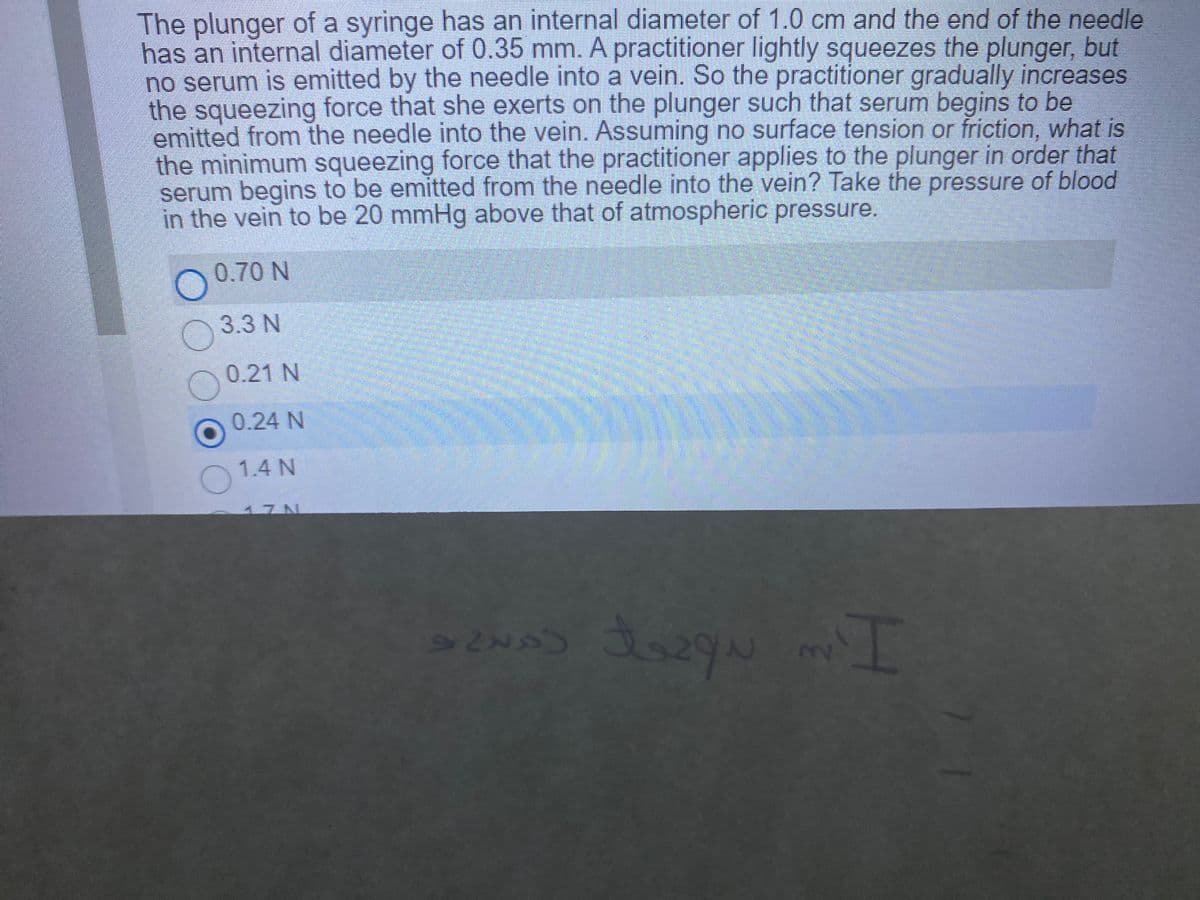The plunger of a syringe has an internal diameter of 1.0 cm and the end of the needle has an internal diameter of 0.35 mm. A practitioner lightly squeezes the plunger, but no serum is emitted by the needle into a vein. So the practitioner gradually increases the squeezing force that she exerts on the plunger such that serum begins to be emitted from the needle into the vein. Assuming no surface tension or friction, what is the minimum squeezing force that the practitioner applies to the plunger in order that serum begins to be emitted from the needle into the vein? Take the pressure of blood in the vein to be 20 mmHg above that of atmospheric pressure. 0.70 N 3.3 N 0.21 N 0.24 N 1.4 N 17N
Fluid Pressure
The term fluid pressure is coined as, the measurement of the force per unit area of a given surface of a closed container. It is a branch of physics that helps to study the properties of fluid under various conditions of force.
Gauge Pressure
Pressure is the physical force acting per unit area on a body; the applied force is perpendicular to the surface of the object per unit area. The air around us at sea level exerts a pressure (atmospheric pressure) of about 14.7 psi but this doesn’t seem to bother anyone as the bodily fluids are constantly pushing outwards with the same force but if one swims down into the ocean a few feet below the surface one can notice the difference, there is increased pressure on the eardrum, this is due to an increase in hydrostatic pressure.

Step by step
Solved in 2 steps with 2 images









